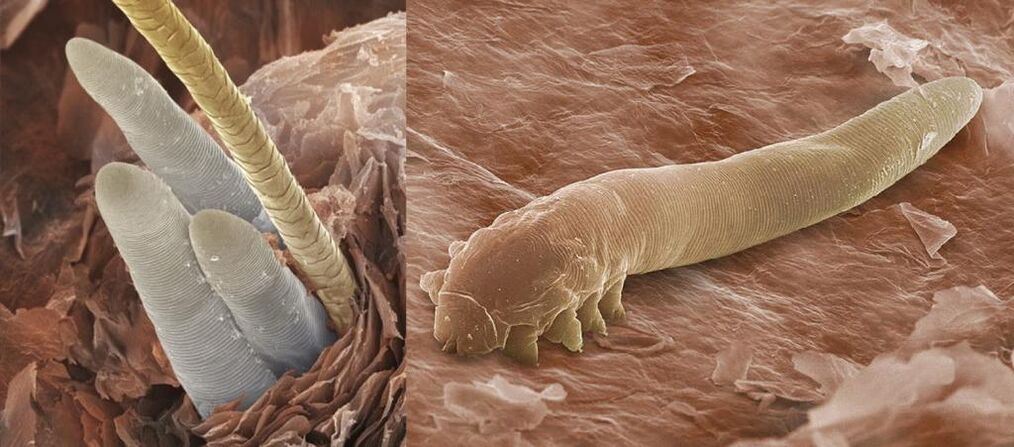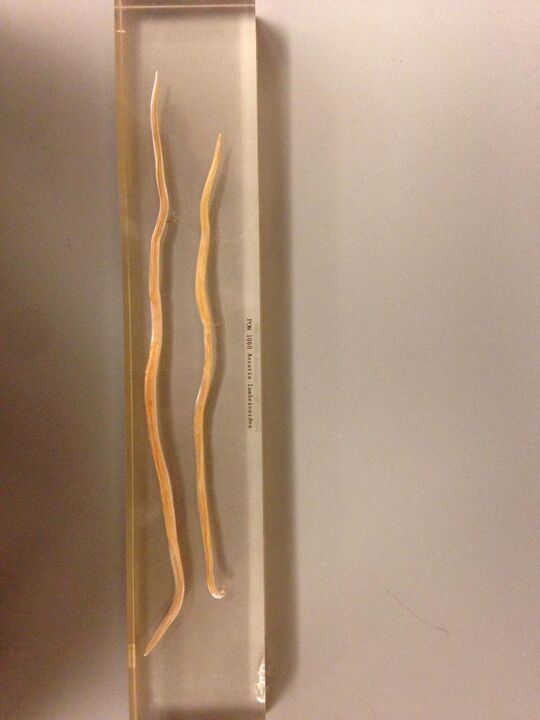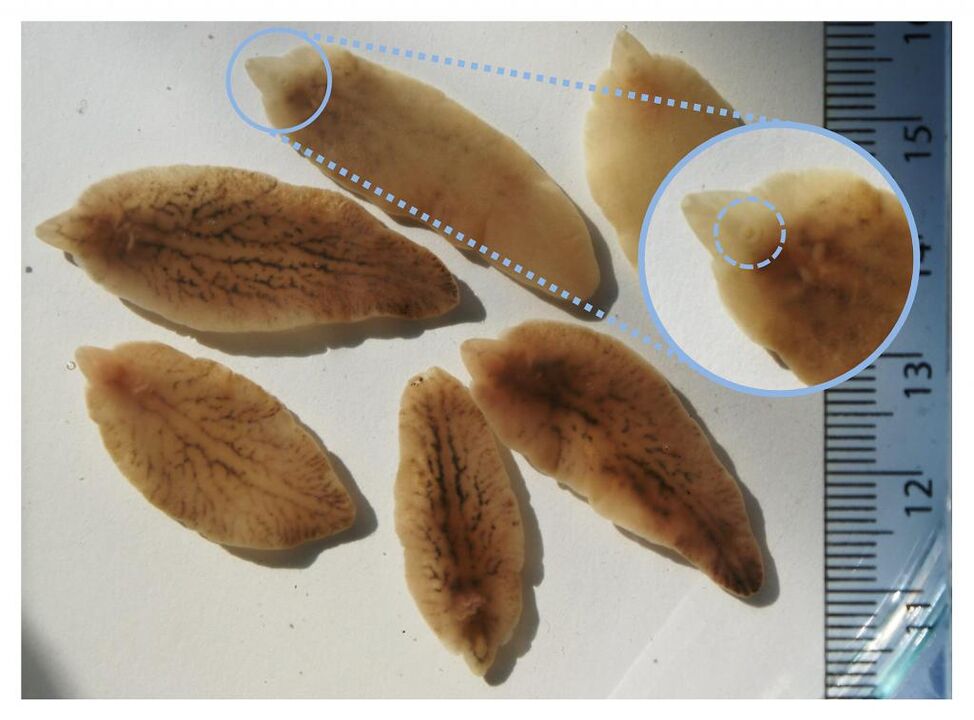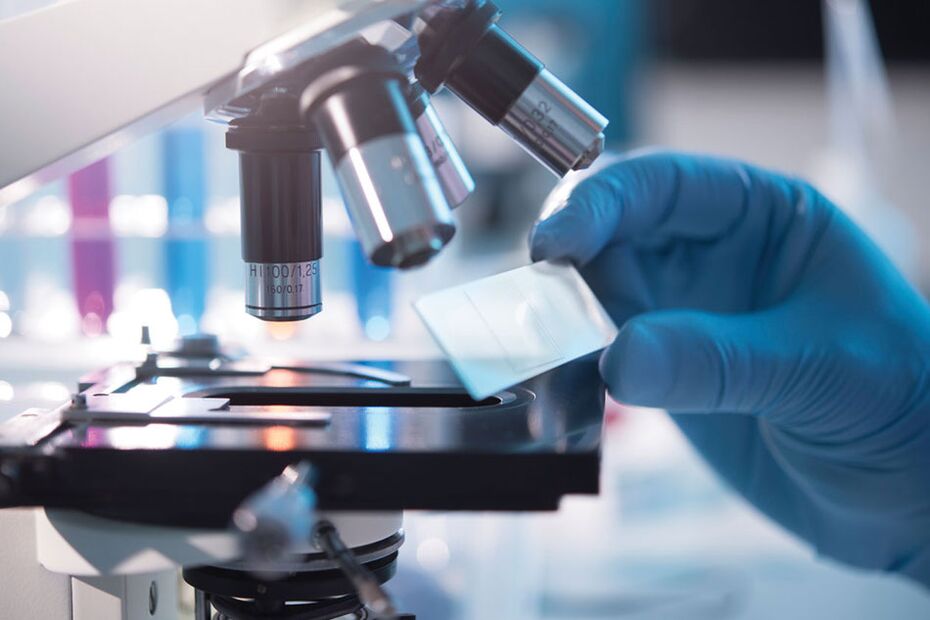Parasitic infections are a wide range of symptoms and diseases caused by eggs or adult parasites in the human body.Often, the first signs of the disease cannot be detected for several days, in some cases for several months or even years.This is due to the life cycle of parasites and their basic functions: good disguise and maintaining your own life from the host's body to nutrients.
Types of parasites and their characteristics
Parasitic infections, according to certain properties of their manifestation, are divided into three groups:
- Ectapharazites.
The main location is the surface of the human body.This includes lasers, fleas, mites and beds.They are predominantly fed in human blood, but in some cases, for example, mites that cause demodicosis, the main food is the secretion of the sebaceous glands or dead epithelial (skin) cells. The first signs of parasitic infection are quite simple as they cause itching and burning them in habitats.Some ectoparasites carry serious diseases: typhus, anthrax, encephalitis and tranosomasia.They cause huge harm to human health, including death.
The first signs of parasitic infection are quite simple as they cause itching and burning them in habitats.Some ectoparasites carry serious diseases: typhus, anthrax, encephalitis and tranosomasia.They cause huge harm to human health, including death. - Endoparasites (protozoos).
It mainly affects internal organs.They are joint in the structure, hence the name is protozoic.However, they can lead to severe forms of illness.The main diseases of this group are parasitic blood infection caused by toxoplasm and intestinal infections caused by amoeba or giardia. - Helminths.
They are agents of the most common forms of parasitic infections.In the human body, their developmental cycles mainly occur in the intestines and tissues, where symptoms of the disease begin.
Round worms (nematodes)
These are parasites whose body is round in the cross section.Sexual characteristics are easy to distinguish.Women are usually bigger than men.But representatives of this class also have hermaphrodites.All nematodes go through the development stage: eggs, larvae and adult.This class includes:
- Pinworm.The disease is caused by enterobia.It mainly affects preschool and elementary school children.
- Whipworm.Causes trichurosis of the disease.Has a distinctive shape of the body.2/3 of the body length has a thin diameter that reminds the human hair or the thread.The second end of the body is larger in diameter and contains the intestines.
- Askaris.The disease is caused by ascaria.Adults reach size 25 cm (male) and 40 cm (female).Once the larva enters the human body, it passes through the stomach and enters the small intestine.From there, with blood flow pores, it enters the liver, then to the heart and then to the lungs, where it develops for 7-10 days.Then the larvae begin to grow larynx.Once they reach the mouth, they will re -swallow.Once in the small intestine, the larvae do not see the blood vessels in the pores due to their large size.There they grow in adults for 2-3 months.After that, the reproduction begins and the cycle repeats.A woman can burn more than 200,000 eggs a day.

Tapworms (Cestods)
These are parasites whose body resembles a ribbon shape.A distinctive feature of this class is the absence of a digestive system.This includes:
- Echinococcus.The disease is caused by echinococcosis.This parasite is small (2-9 mm) and consists of several segments and suckers.The womb of a sexy sexual individual contains a large number of eggs inside which is larvae.The main areas of echinococcal localization are liver and lungs.There it causes a chronic disease called a hydrate cyst.
- Bull tapeworm.Causes tinarinchiasis of the disease.In the larvae stage, it has an intermediate host - cattle.Once in the human body it develops in the small intestine in the tape stage.The adult parasite body has 1000 segments and can reach 4-10 meters in length.
- Pork frying.Causes Tenniasis of the Disease.Outwardly, it is very similar to a grilled pan.It also has intermediate hosts: pigs, dogs, camels, rabbits and rabbits.In humans it is a parasite in the intestines.The size of the adult individual does not exceed 4 meters in length.
- The flour is wide.The disease is caused by diphylobothrosis.Lives in the freshwater bodies of water.It uses cancer and fish as an intermediate host.In the human body it parasitizes the small intestine.The adult can reach a few meters in length.
Flatworms (Flukes)
During their life cycle, these parasites can replace several intermediate hosts.In humans, they are parasitized in any body.This group includes:
- Schistosomes.The disease is caused by chistosomiosis.They can enter the human body by contact with pure water.The parasite penetrates the skin and enters the circulatory system, where it begins to actively multiply.Women can produce 300 to 3,000 eggs a day.In addition, thanks to blood flow, the eggs extend throughout the body and continue to develop in any body.Their body length does not exceed 0.1-0.2 cm.
- Liver flanks.The disease is caused by opisthorchiasis.Adult length varies from 3 to 5 cm.When it enters the human body, it parasitizes bile ducts, gall bladder, liver and pancreas.It is fixed in these organs using the suction cups on the body.

The ways of penetrating parasites into the human body
- The food route of infection is the most common.A person with a parasite is infected with poorly washed vegetables and fruits.Particularly dangerous is meat that does not have sufficient heat treatment.Also, a person is infected with a parasitic infection unless the rules of personal hygiene are followed.For example, washing your hands before eating.
- Transplanting route.Parasitic infection is transmitted from pregnant woman through the placenta to the baby.For example, these are diseases such as toxoplasmosis, malaria or khakuna.
- Percutian road.The parasite enters the human body through the skin.These are mainly schistosomes and khakuns.
- Contact way.The parasite is transferred to dirty hands, contaminated personal items and underwear.This is how lasers, scabs and pinworms are most commonly made.
- Transfer path.The infection occurs after insect bites that carry parasites.For example, malaria.
Symptoms
Many parasitic diseases have no symptoms at an early stage.This is due to the development of the pathogen.Each individual type of parasite is manifested differently as it grows.The general general symptoms of parasitic infection include:
- Itching.
- Redness of the skin as urticaria.
- Diarrhea.
- Constipation.
- Refrigerant.
- Nausea, vomiting.
- Spasms and pain in the gastrointestinal tract.
- Body weight loss without increasing diet or physical activity.
- Fever condition.
- High body temperature (38-40 ˚C) for a long period.
- Prolonged attacks of dry cough.
- Extended lymph nodes.
- Painful sensations in the muscles.
- Psycho-emotional disorders.
Diagnostics

If you suspect parasitic diseases, you should go through a series of tests.The diagnosis of parasitic infections allows us to determine the presence or absence of a parasite, its type and location.The data obtained will help your doctor to make the right diagnosis and determine the right treatment.
Diagnostic methods include:
- Stool test.Allows you to determine most of the parasites that live in the intestines.Their eggs, larvae and body segments are excreted in feces.There are two types of analysis:
- Stool sample is examined for helminth eggs and larvae.The analysis is supplied to the laboratory where the doctor does a smear and examines them under the microscope.This method is often used, but it is not enough.To make a final diagnosis, the patient must undergo this test at three times in short intervals.This is due to the life cycle of the parasites and the layout of the eggs that are identified by the method of this study.
- Spying (washing) from the anus folds.This test is used to identify only one type of helminths - pins.Parasitic infections are more common in children than in adults.For this reason, this analysis is performed mainly for children.The lab technician moisturizes the wavelength of cotton or glass in water or glycerin and rinse it from perianal folds.Next, the resulting material is used on a glass slide and is examined under the microscope.This analysis is also performed using another method: the laboratory assistant puts a piece of adhesive tape with an anal passage, presses it and assembles it.The adhesive tape is then inserted on the glass slide and is also found under the microscope.The parasite is diagnosed quite accurately.Using these methods, the laboratory assistant can study not only helminth eggs but sometimes adults.
- Cerebrospinal fluid, sputum, duodenal contents (bile), urine.In order to determine the presence of a parasite on the basis of the patient's survey results and determine its location.These biological fluids are analyzed using a microscope and macroscope.First, the resulting sample was examined for the presence of adults, and then microscopy is performed to reveal parasites eggs and larvae.
- Blood test.Modern methods of blood testing for parasitic infections will make it possible to determine the presence and types of high -precision pathogen.Three types of such diagnosis are used:
- Serological reactions.Allows you to determine the presence of parasite antibodies in the patient's blood serum.This method is considered to be a highly specific but PCR diagnosis.
- PCR diagnosis.This method is based on the DNA of Parasites in any biological fluid that was obtained for analysis.
- Genetic research.It involves the detection of the parasite genome in the patient's blood sample.This method is used much more rarely than all the rest, but has high accuracy.
- Check of biopsy material and lymph nodes.For this analysis, the doctor exerts a small section of the body, tissue or the entire lymph node and sends it for histological examination.In this way the presence or absence of parasites is diagnosed.
Recommendations for testing
Before performing parasitic infections tests, you need to prepare for them properly.If the recommendations are followed, the accuracy of the diagnosis increases because the material does not contain factors of interference that affect the effectiveness of the research methods.
Preparing for a feces test:
- Antibiotics, anti -inflammatory agents and antacids should be stopped.It is also unacceptable to use medicines and other medications that contain bismuth and iron.
- If an X-ray was performed using barium or colonoscopy, during which the enema was cleaned to cleanse the intestines, then a feces test can only be performed after 2-3 days.
- Feces donation is not recommended if menstrual bleeding begins or worsens shrubs.
Preparing for a blood test:
- It is necessary to stop taking pharmacological medicines that affect the number of blood.
- Three days before the test, you should follow a light diet, do not eat fatty foods and refuse alcohol.
- Blood testing of parasitic infections is performed on an empty stomach.It is permissible to drink a small amount of pure drinking water.
For other tests, most often special training is not needed.You will only need to follow your doctor's recommendations.
Treat
Unfortunately, symptoms of parasitic infections may not always be manifested at the initial stage of the disease.In such cases, treatment begins late.It is important to understand: the longer the parasite in the body, the more difficult it will be to get rid of it.
The therapy of infectious and parasitic infections is divided into two sides:
- Symptomatic treatment.The aim is to eliminate the clinical manifestations of the disease.This includes a decrease in body temperature, removal of redness and itching, and normalizing the functioning of the gastrointestinal tract.
- The etiological treatment of parasitic infections is aimed at escaping from the causative agent of the disease.
In some cases, surgery may be necessary.It is used for alveococcosis, echinococcosis, and some types of trematodes infection.
When the body is dehydrated, salt -containing solutions are prescribed.
Only your doctor can prescribe parasitic infections on the basis of laboratory tests and patient interviews.
Prevention
It is very important to observe the prevention of parasitic infections.In most cases, this will help to enter the body of pathogens.

Preventive measures include:
- Adherence to personal hygiene rules: You need to wash your hands before eating, after visiting the toilet, and after going home on the street.
- Vegetables and fruits should be washed well.
- It is necessary to treat meat, fish and seafood sufficient heat.
- Tap water should not be used as drinking water as it may not always be free from parasites.Using home filters as extra cleaning will not help.The best option would be to drink boiled or bottled water.
- If pets live at home, they should be taken every six months.You should also limit contact with your animal if it shows a sign of parasitic diseases and contact a veterinary clinic.
- You need to release the underwear (especially children) after washing.
- After visiting exotic countries, when working with the land, as well as working with children's institutions, it is recommended to study parasitic infections once a year and, if necessary, prevent medication.


























